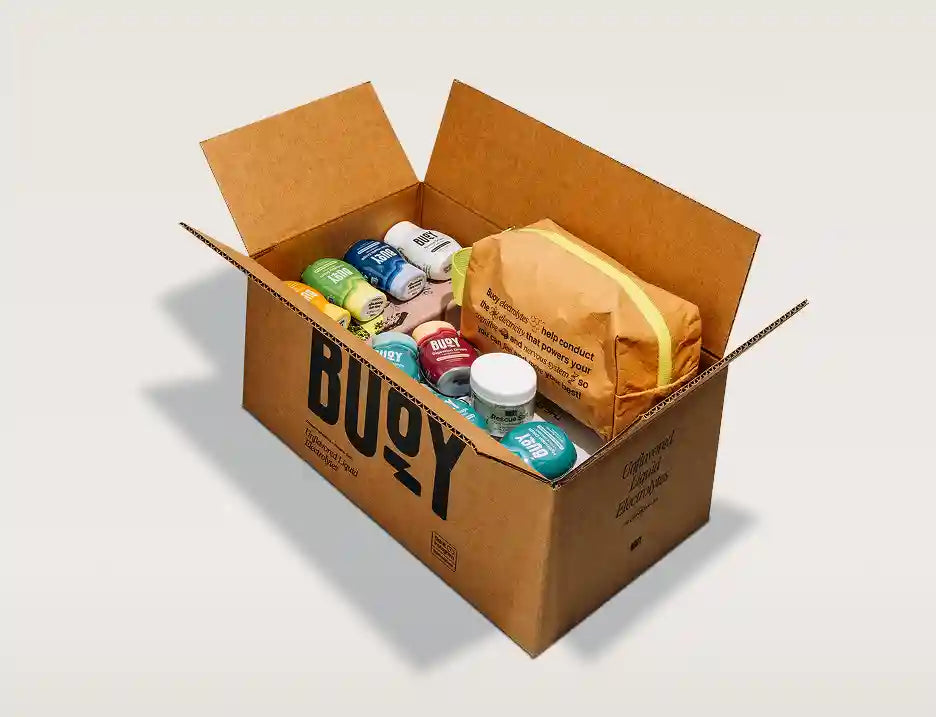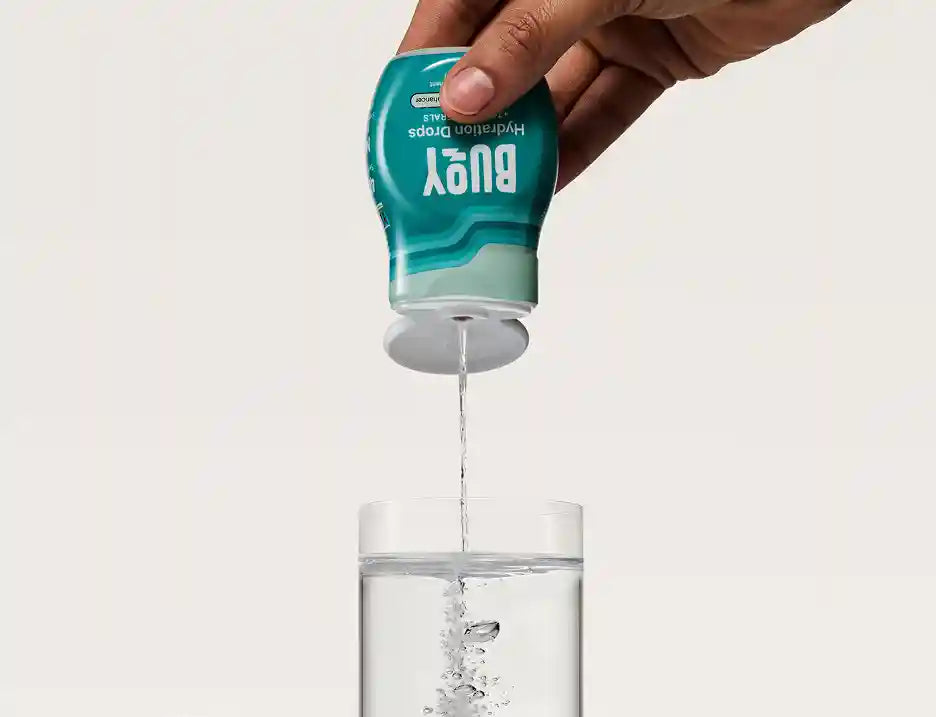
POTS and Digestive Issues: Managing Gastrointestinal Symptoms
Share
If you’re living with Postural Orthostatic Tachycardia Syndrome (POTS), you may already know how much it can affect your daily life. But one area that’s often overlooked is digestion.
POTS doesn’t just impact blood flow and heart rate—many people experience gastrointestinal symptoms in POTS, including nausea, bloating, and even changes in bowel habits.
The good news? While these challenges are common for people with POTS, there are some effective strategies that can help you manage them.
Essential Takeaways:
- The Impact of Digestive Issues in POTS: Symptoms like nausea, bloating, and post-prandial hypotension are common in POTS due to autonomic nervous system dysfunction, making it harder to maintain energy and proper nutrition.
- So, What Can You Do? Staying hydrated with electrolytes can improve blood volume, enhance nutrient absorption, and support gut health. Adding electrolyte and mineral drops to your daily routine is a simple way to feel your best while managing POTS-related digestion challenges.
Let’s explore how POTS can affect your digestion and what you can do to find relief.
- How POTS Affects Digestion
- Understanding Post-Prandial Hypotension in POTS
- Dietary Strategies for Digestive Management
- Practical Tips for Managing Digestive Symptoms
- When to Consult a Specialist
- Managing POTS Digestive Symptoms with Confidence
How POTS Affects Digestion
Managing POTS digestion challenges requires understanding how your autonomic nervous system impacts your GI tract. Your digestive system relies heavily on your autonomic nervous system (ANS), which is the same system affected by POTS.
What Does the Autonomic Nervous System Do?
The ANS regulates involuntary body functions, including digestion, heart rate, and blood pressure. When the ANS isn’t working properly—as is the case with POTS—digestive processes can slow down or become irregular.²
Let’s look at some of the most common digestive symptoms experienced by POTS patients.
Are Digestive Issues with POTS Common?
GI symptoms affect about 69% of POTS patients, with delayed gastric emptying (gastroparesis) and bloating being some of the most frequently reported issues, according to a systematic review.
Patients with conditions like Ehlers-Danlos syndrome (EDS) or autonomic neuropathy are at an even higher risk for severe GI symptoms.¹
Nausea and Vomiting
Delayed gastric emptying, or gastroparesis, is common in POTS. It means food takes longer to move from the stomach to the small intestine, leading to nausea or even vomiting.
Post-Prandial Hypotension
After eating, blood flow shifts to the digestive system. For POTS patients, this can cause a significant drop in blood pressure, which may leave you feeling lightheaded, fatigued, or faint.
Bloating and Gas
Poor motility (the movement of food through the digestive tract) can cause bloating and excessive gas. This can be particularly uncomfortable after larger meals.
Constipation or Diarrhea
Constipation and diarrhea in POTS often stem from autonomic nervous system dysfunction, which disrupts gut motility. The ANS plays a critical role in coordinating the movement of food through the digestive tract, and when it misfires, it can lead to irregular bowel patterns.
Constipation might result from slowed motility, while diarrhea could occur due to hypersensitivity or poor nutrient absorption. Monitoring these patterns and discussing them with your doctor can help tailor a management plan.¹
Understanding Post-Prandial Hypotension in POTS
Ever felt dizzy or extra fatigued after eating? That’s likely post-prandial hypotension, a common but often overlooked symptoms of POTS.
What is Post-Prandial Hypotension?
Post-prandial hypotension happens when blood pools in your gut during digestion, leading to a drop in blood pressure. For people with POTS, this process is exaggerated due to autonomic dysfunction. This can result in symptoms like dizziness, fatigue, or even fainting after meals.³ ⁴
How to Manage Post-Prandial Hypotension
When you eat, your body naturally diverts blood flow to your digestive system. But for POTS patients, this shift can cause a significant drop in blood pressure. Here are some strategies to help you manage it:
- Eat Smaller, More Frequent Meals: Large meals require more blood flow to the digestive system, increasing the likelihood of blood pressure drops. Aim for smaller portions spread throughout the day.
- Avoid High-Carb Meals: Meals high in carbohydrates can cause rapid blood sugar fluctuations, worsening blood pressure drops. Choose balanced meals with protein, healthy fats, and fiber to stabilize blood sugar and support steady energy levels.
- Stay Seated or Recline After Eating: Sitting or reclining after meals can help reduce blood pooling in your legs, alleviating symptoms.
If these strategies don’t provide enough relief, talk to your doctor. They might want to evaluate you for other conditions or recommend additional options like increasing salt intake, adjusting fluid levels, or medications such as midodrine or octreotide for severe cases.
POTS and Reactive Hypoglycemia
If post-meal dizziness or fatigue persist despite changes to meal size or composition, it might be worth discussing reactive hypoglycemia with your doctor. This condition, caused by a rapid drop in blood sugar after eating, can sometimes overlap with POTS-related symptoms.
Your healthcare provider might recommend monitoring blood sugar levels to determine whether this is contributing to your post-prandial symptoms.³ ⁴

Eating smaller, more frequent meals, like this balanced yogurt and fruit bowl, can help manage post-prandial hypotension in POTS by reducing the blood flow demand for digestion.
Dietary Strategies for Digestive Management
What you eat can play a huge role in managing POTS and digestion challenges. Here are a few dietary strategies to consider.
Low-FODMAP Diet
Foods high in fermentable sugars (FODMAPs) can cause bloating and discomfort, especially if you already have motility issues. A low-FODMAP diet can help reduce these symptoms.
Consider tracking symptoms if you suspect gluten sensitivity. One study found that 6% of POTS patients reported gluten sensitivity, even without celiac disease, and experienced improvements after reducing gluten.³ ⁴
Pro Tip
Keep a food diary to track how different foods affect your symptoms. Common triggers include dairy, gluten, and processed sugar, but everyone’s body is unique.
High-Salt Meals
Since POTS patients often benefit from higher salt intake, eating salty foods can help maintain blood volume and support blood pressure. Think broths, salted nuts, or adding high-quality sea salt to your meals and beverages.³ ⁴
Hydration with Electrolytes
Staying hydrated is crucial for people with POTS, and adding electrolytes can improve water absorption and overall hydration.³ ⁴ Electrolyte supplements like Buoy are an easy way to ensure you’re getting the electrolytes you need every day.
Learn more about POTS and hydration with our guide, Hydration Myths and Facts in POTS.
Skipping Meals
Skipping meals might seem like an easy way to avoid digestive discomfort, but it can backfire. Going too long without eating may worsen symptoms like nausea, fatigue, and blood sugar drops, especially in POTS patients.
Instead, focus on smaller, frequent meals to stabilize blood sugar levels and support digestion without overloading your system.
Crafting a POTS-Friendly Diet: Examples to Get You Started
A POTS-friendly snack might include salted almond butter on rice cakes paired with a glass of water mixed with electrolyte drops. For a light meal, consider grilled chicken with a side of roasted zucchini and a small serving of quinoa.
These options offer hydration, salt, and gentle-on-the-stomach ingredients, ideal for POTS management.
Practical Tips for Managing Digestive Symptoms
In addition to dietary changes, small adjustments to your routine can make a big difference in how you feel. Here are some ideas:
- Chew Thoroughly: Proper chewing helps kickstart digestion, making it easier for your stomach to process food.
- Consider Supplements: Digestive enzymes or probiotics (with your doctor’s approval) can improve gut health and aid digestion.
- Post-Meal Positioning: Elevate your feet or lie down after meals to reduce blood pooling and ease post-prandial hypotension.
- Create a Calm Eating Environment: Stress can worsen symptoms, so try to eat in a relaxed setting, free from distractions.¹ ⁴
Remember that finding the right combination of strategies may take time and patience. Start with one or two changes and gradually incorporate more as you learn what works best for your body.
While these adjustments might seem small, they can significantly impact your daily comfort and quality of life when dealing with POTS-related digestive issues.
Get more ways to manage your condition with our in-depth guide to Lifestyle and Diet Changes for Managing POTS.

Manage POTS-related digestive issues like bloating and gas with Buoy Digestion Drops. Just add a squeeze to any drink for quick, convenient relief!
When to Consult a Specialist
If your digestive issues persist despite lifestyle changes, it’s important to consult a healthcare provider. Seek immediate medical attention if you experience serious symptoms, such as:
- Severe or persistent abdominal pain
- Significant weight loss
- Blood in stool
- Frequent vomiting
- Severe diarrhea or constipation lasting more than a few days
Your healthcare provider might recommend specialized tests like gastric emptying studies or glucose tolerance tests to better understand your symptoms and rule out other conditions.¹ ³ Don’t hesitate to advocate for the care you need—addressing these issues can make a big difference in your overall well-being.
Do you struggle with talking to your doctor about POTS? Discover how to navigate healthcare with POTS in our comprehensive guide.
Managing POTS Digestive Symptoms with Confidence
Living with POTS-related digestive issues isn’t easy, but you don’t have to figure it out alone. Understanding POTS digestive issues, working closely with your healthcare team, making dietary changes, and implementing practical strategies can help you regain control over your symptoms.
Be Patient with the Process
Improvement often comes gradually, so be patient with yourself as you explore what works best for your body. With the right support and management plan, many POTS patients experience significant relief from their digestive symptoms.
Build a Support System
Stay patient with yourself as you navigate these challenges. With the right support and management strategies, many POTS patients find significant relief from their digestive symptoms.
Stay Consistent and Informed
Track your symptoms, stay hydrated, and maintain open communication with your healthcare providers.
Explore our other POTS guides for tips on managing symptoms like brain fog, blood pooling, and stress. These resources are designed to complement the practical strategies shared here and help you navigate POTS with confidence.

Support your POTS management with Buoy’s full lineup of electrolyte and hydration drops. Whether it’s digestion, energy, or overall hydration, Buoy makes it easy to boost your wellness by adding powerful minerals and electrolytes to any drink.
References:
-
Mehr, S. E., Barbul, A. & Shibao, C. A. (2018). Gastrointestinal Symptoms in Postural Tachycardia Syndrome: A Systematic Review. Clinical Autonomic Research: Official Journal of the Clinical Autonomic Research Society, 28(4), 411–421. Retrieved from https://pmc.ncbi.nlm.nih.gov/articles/PMC6314490/
-
Cleveland Clinic. (2023). Nervous System. Retrieved from https://my.clevelandclinic.org/health/body/21202-nervous-system
-
Abed, H., Ball, P. A. & Wang, L. X. (2012). Diagnosis and Management of Postural Orthostatic Tachycardia Syndrome: A Brief Review. Journal of Geriatric Cardiology: JGC, 9(1), 61–67. Retrieved from https://pmc.ncbi.nlm.nih.gov/articles/PMC3390096/
- Miglis, M.G., Larsen, N. & Muppidi, S. (2022). Mechanisms of Post-Prandial Symptoms in Postural Tachycardia Syndrome and Other Updates on Recent Autonomic Research. Clinical Autonomic Research, 32, 87–89. Retrieved from https://link.springer.com/article/10.1007/s10286-022-00863-4




